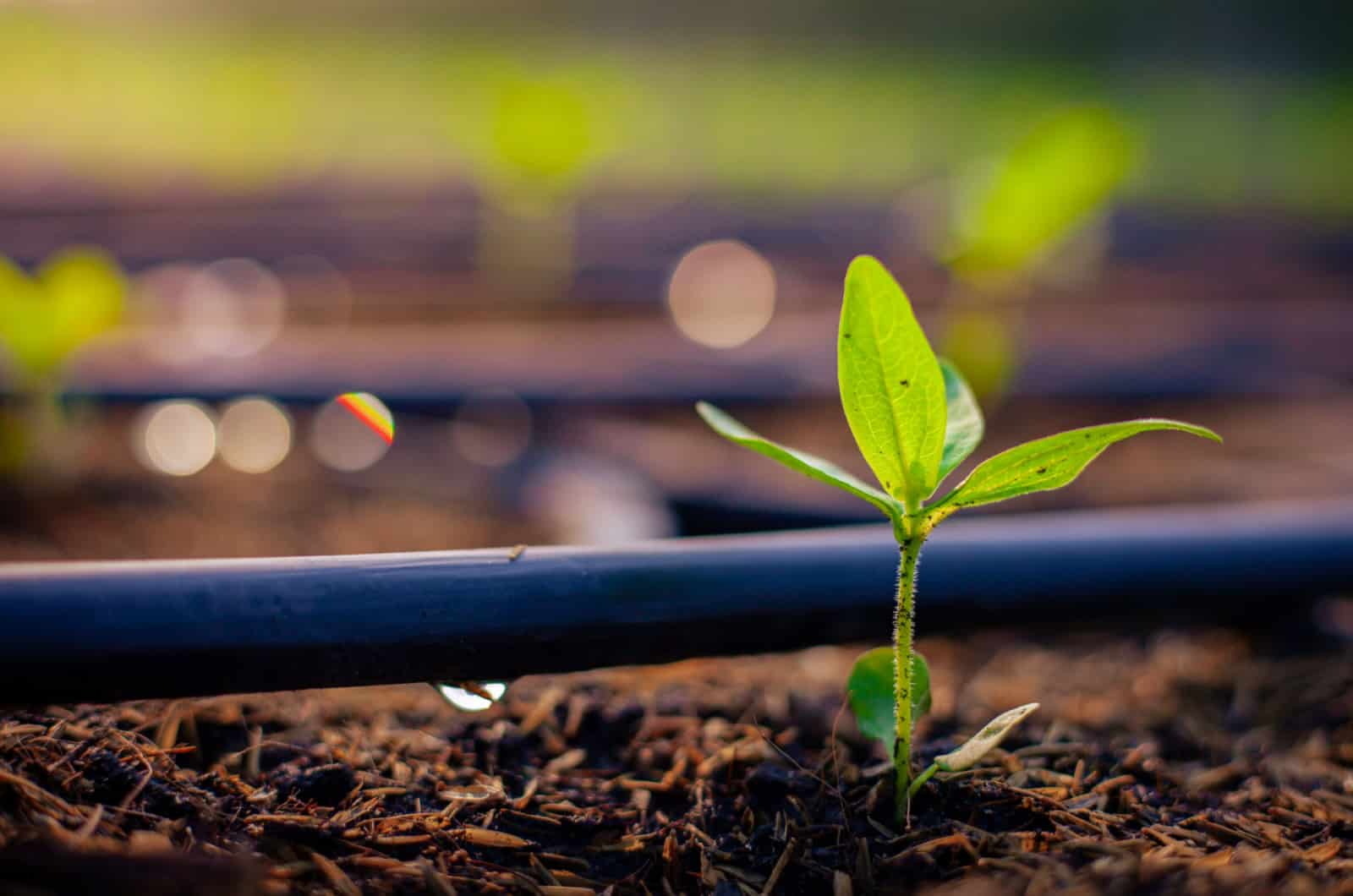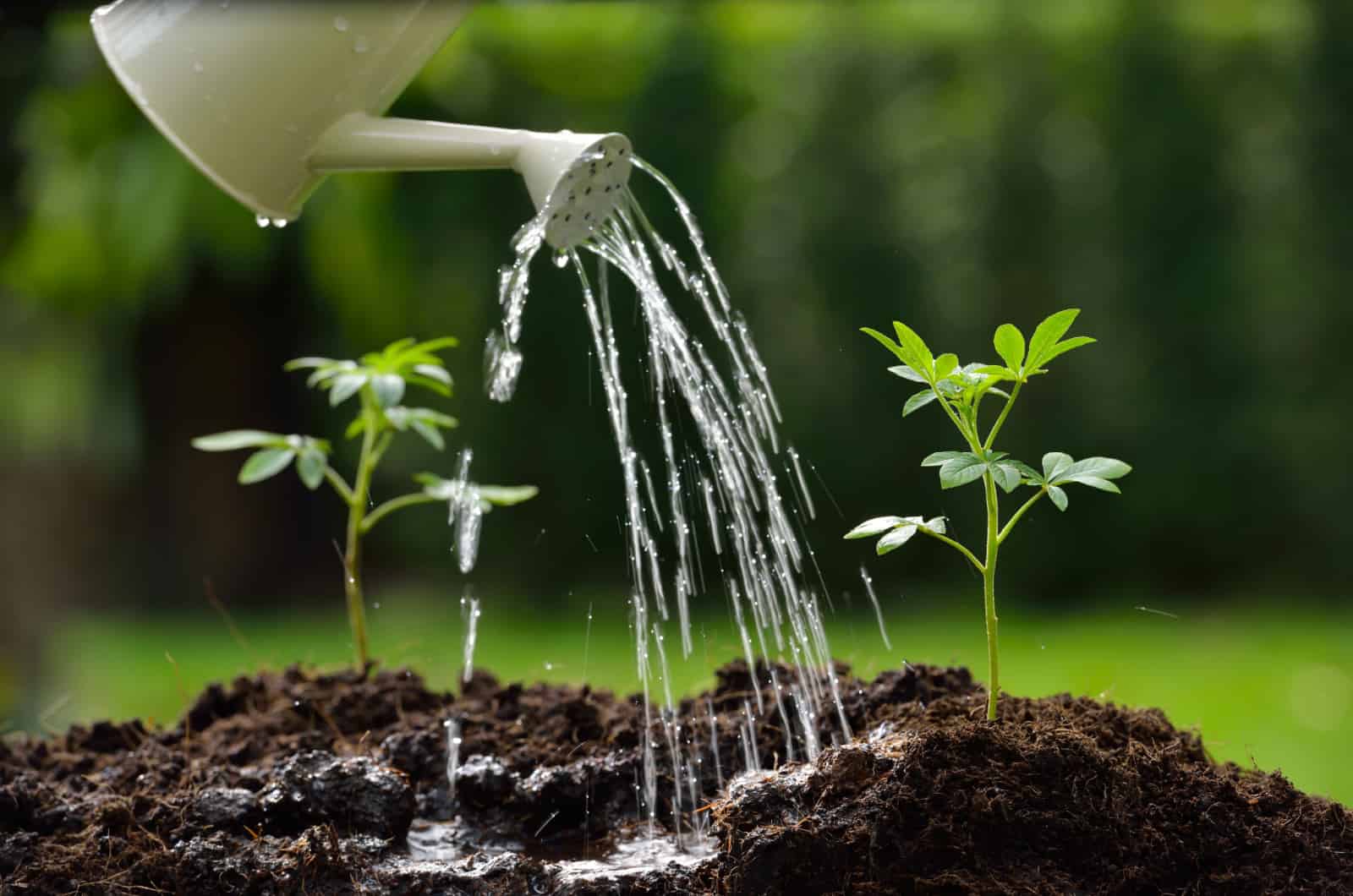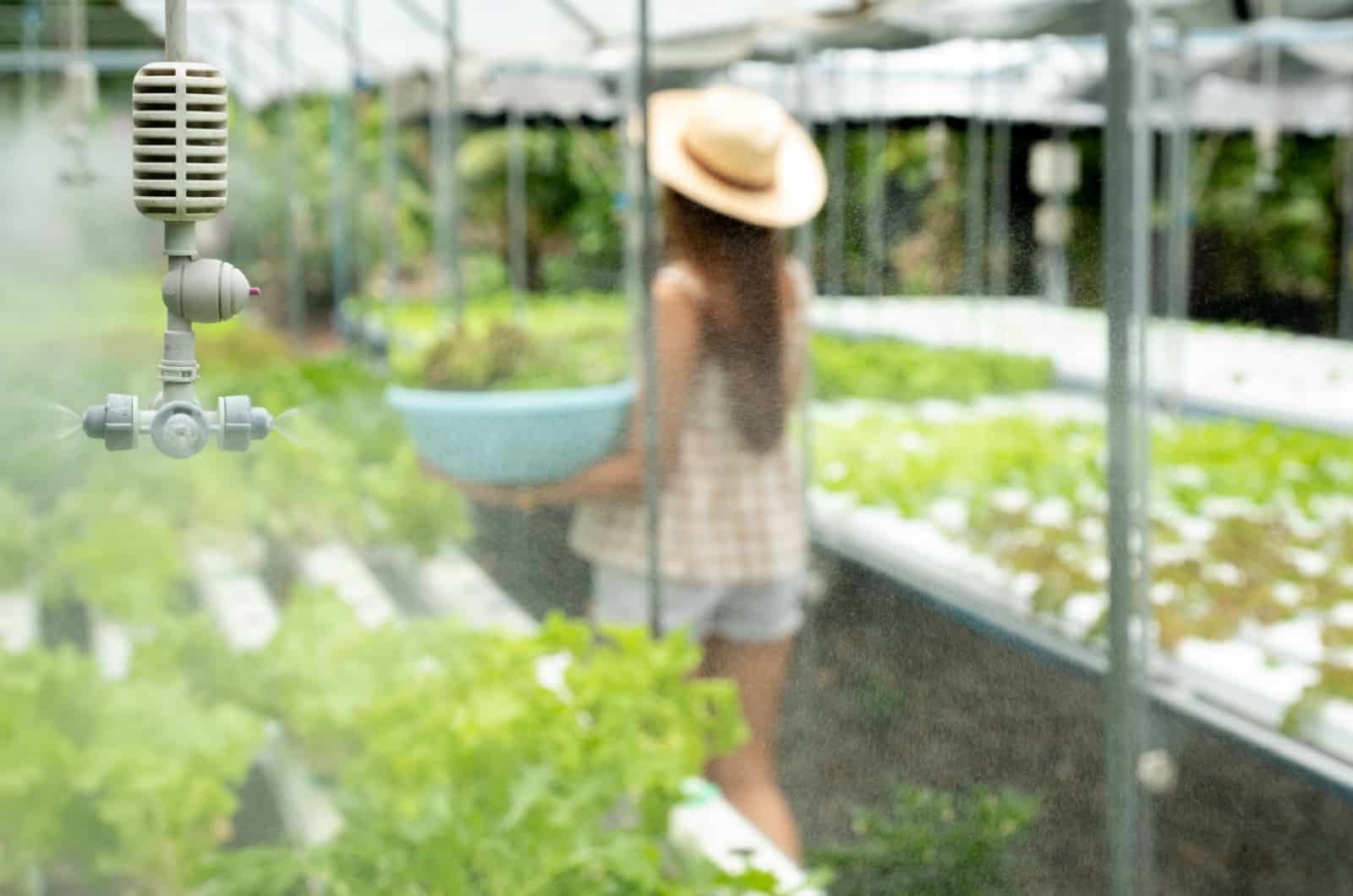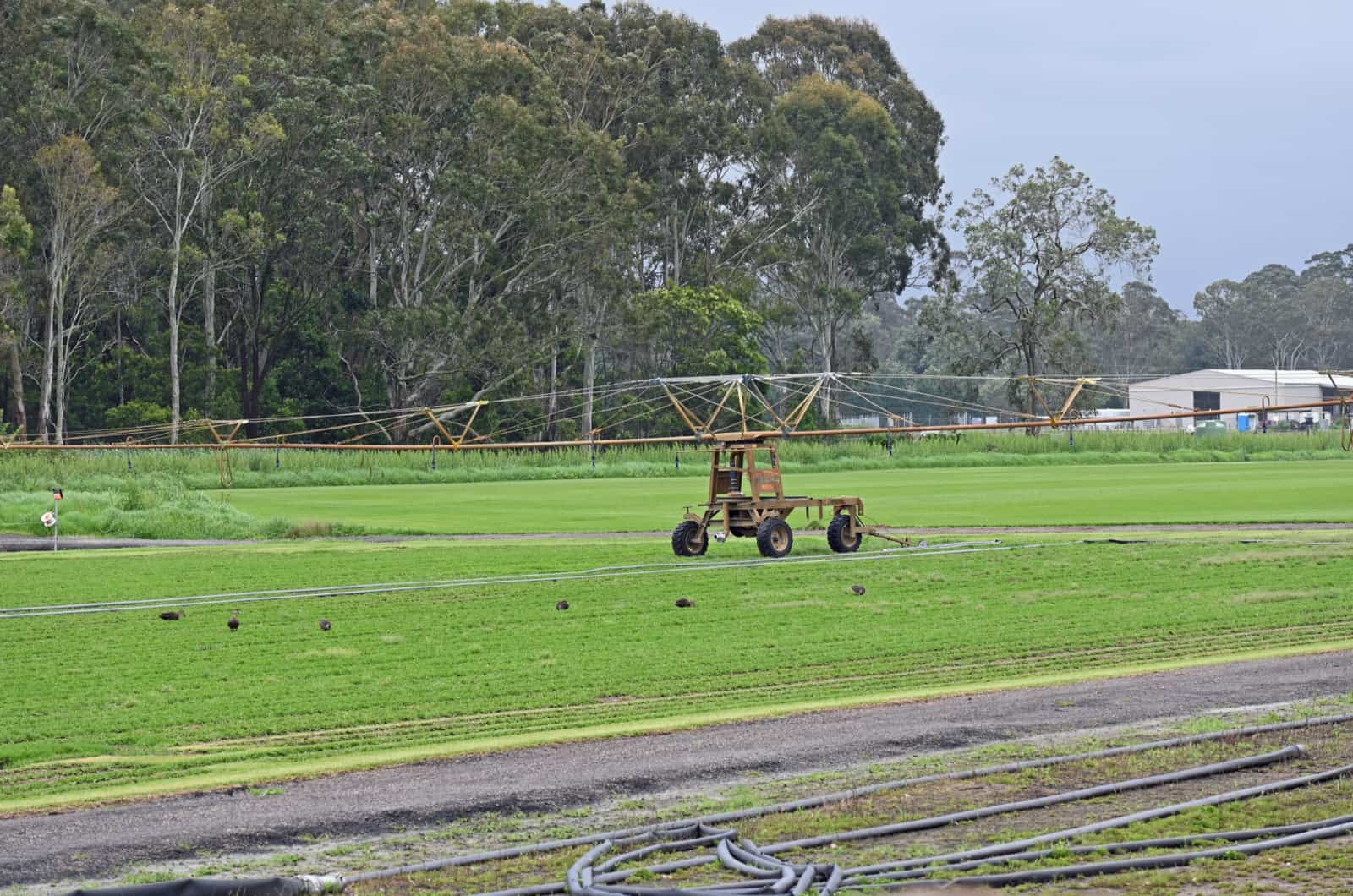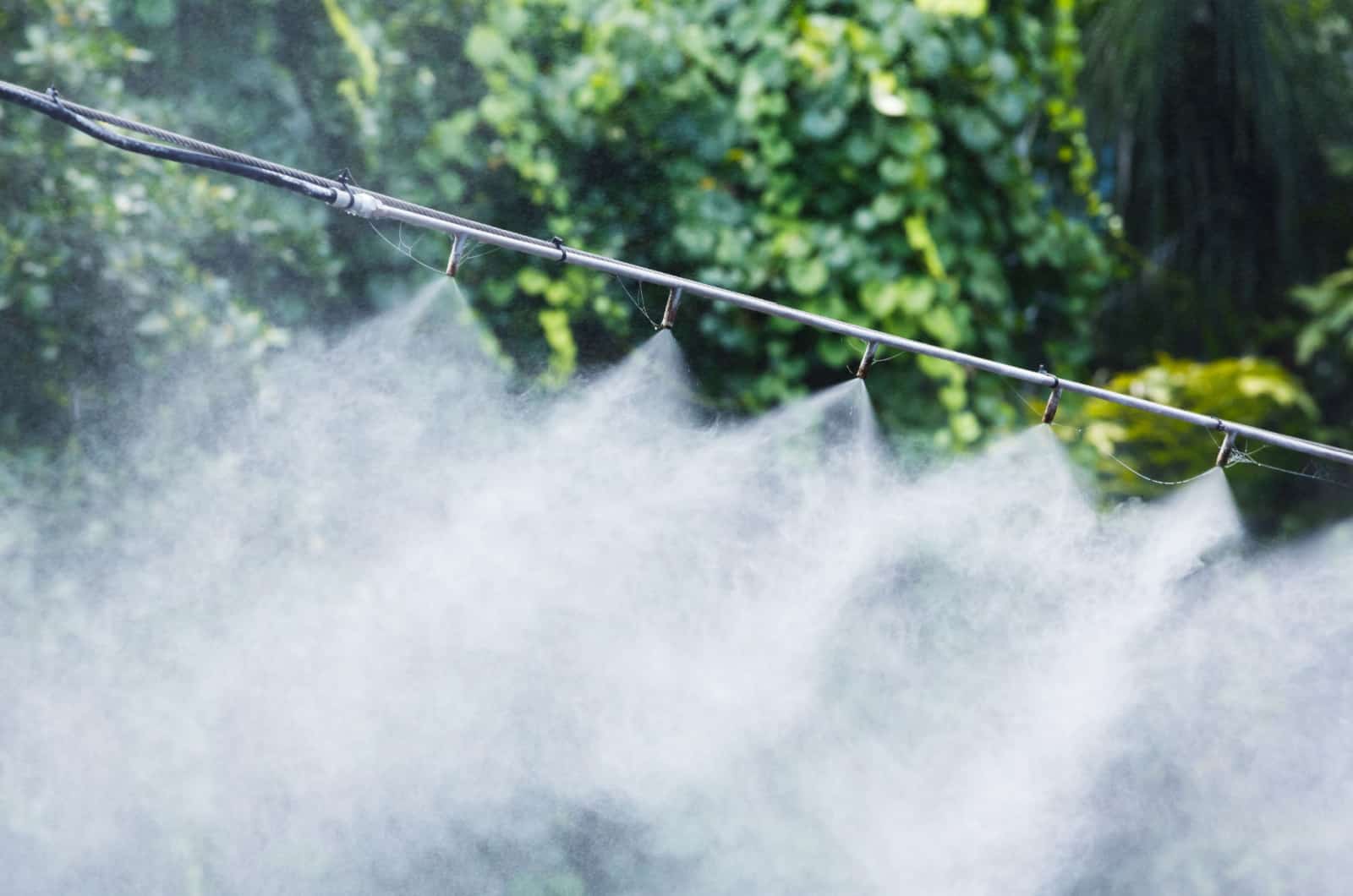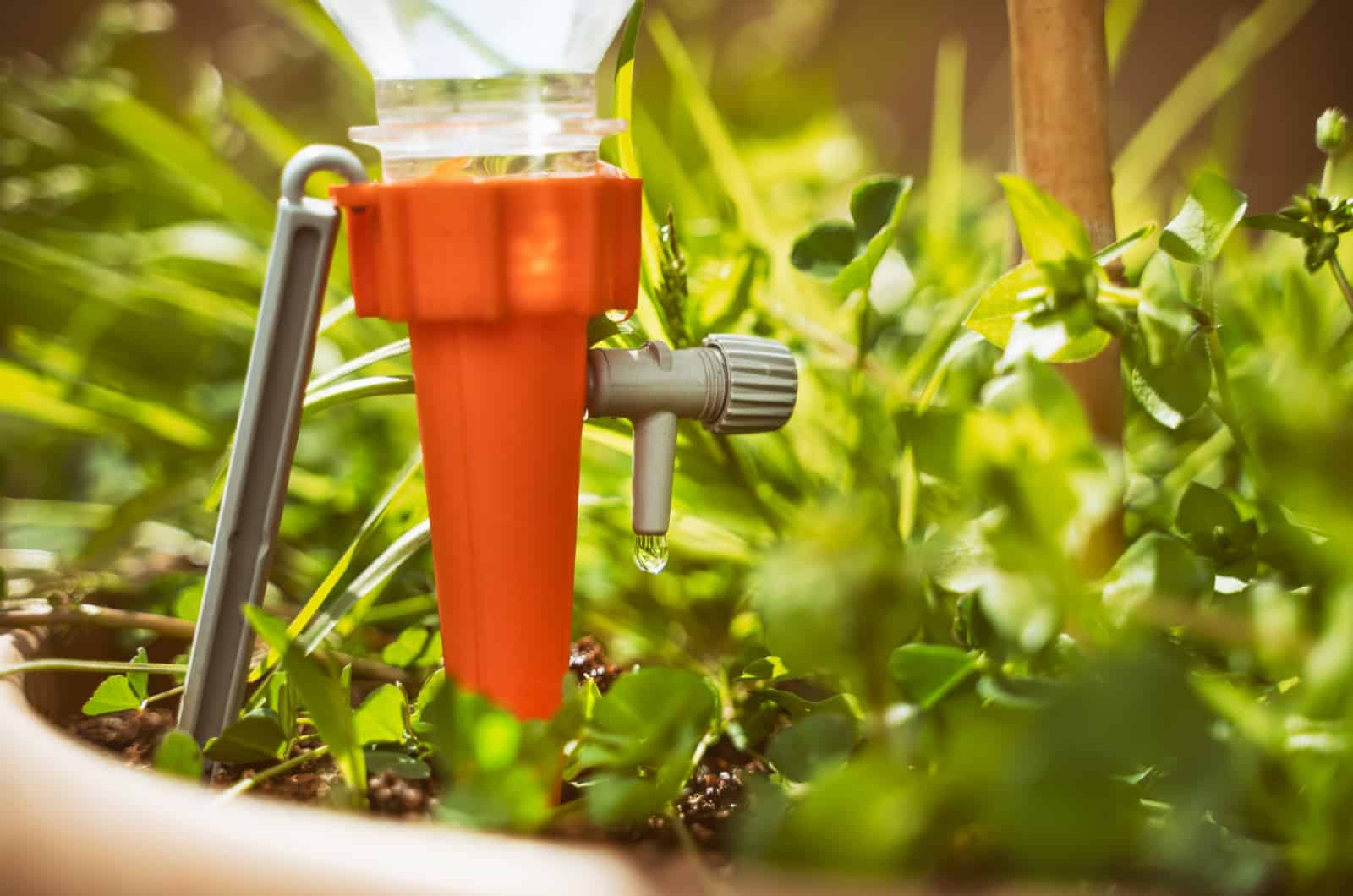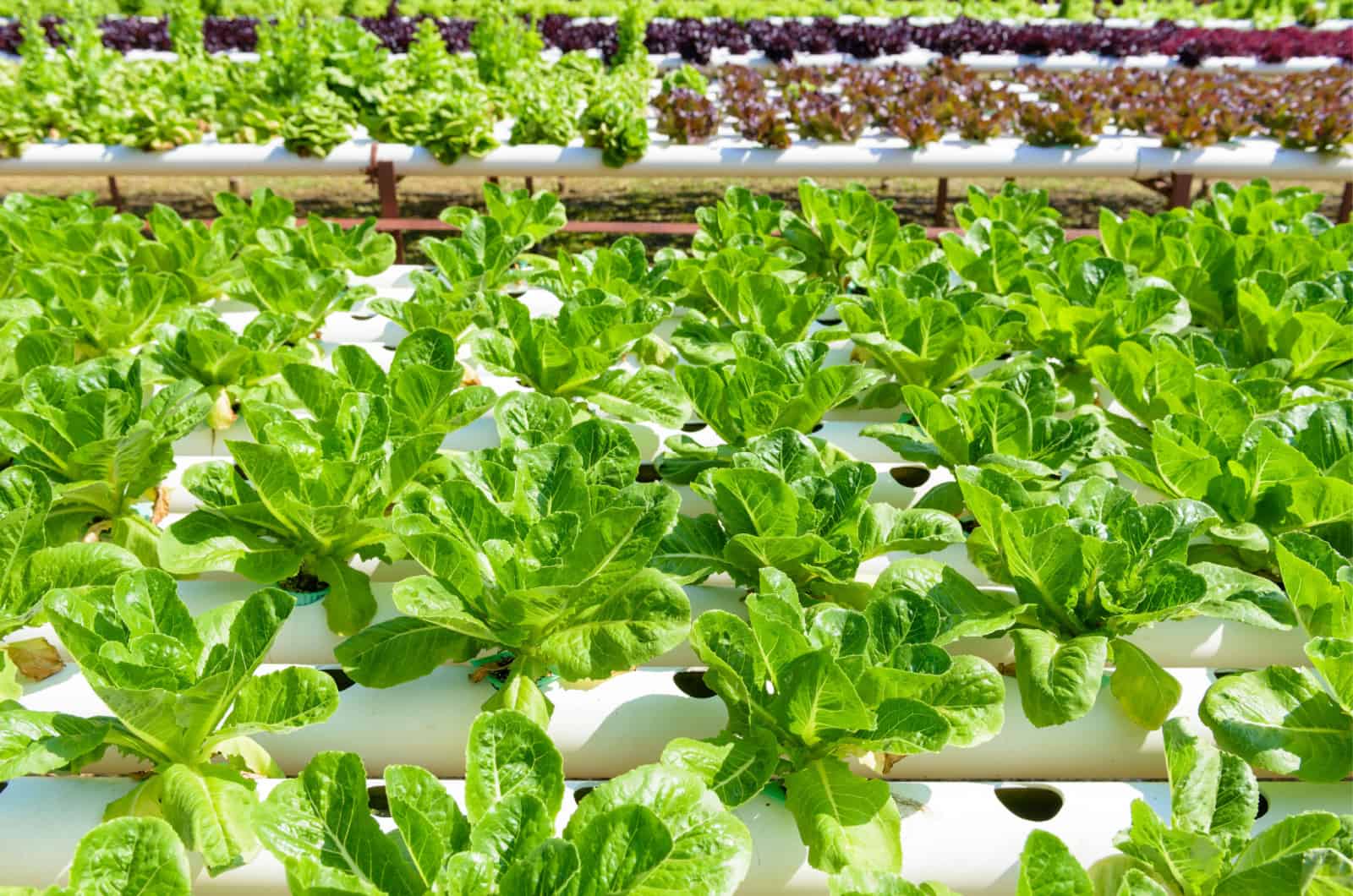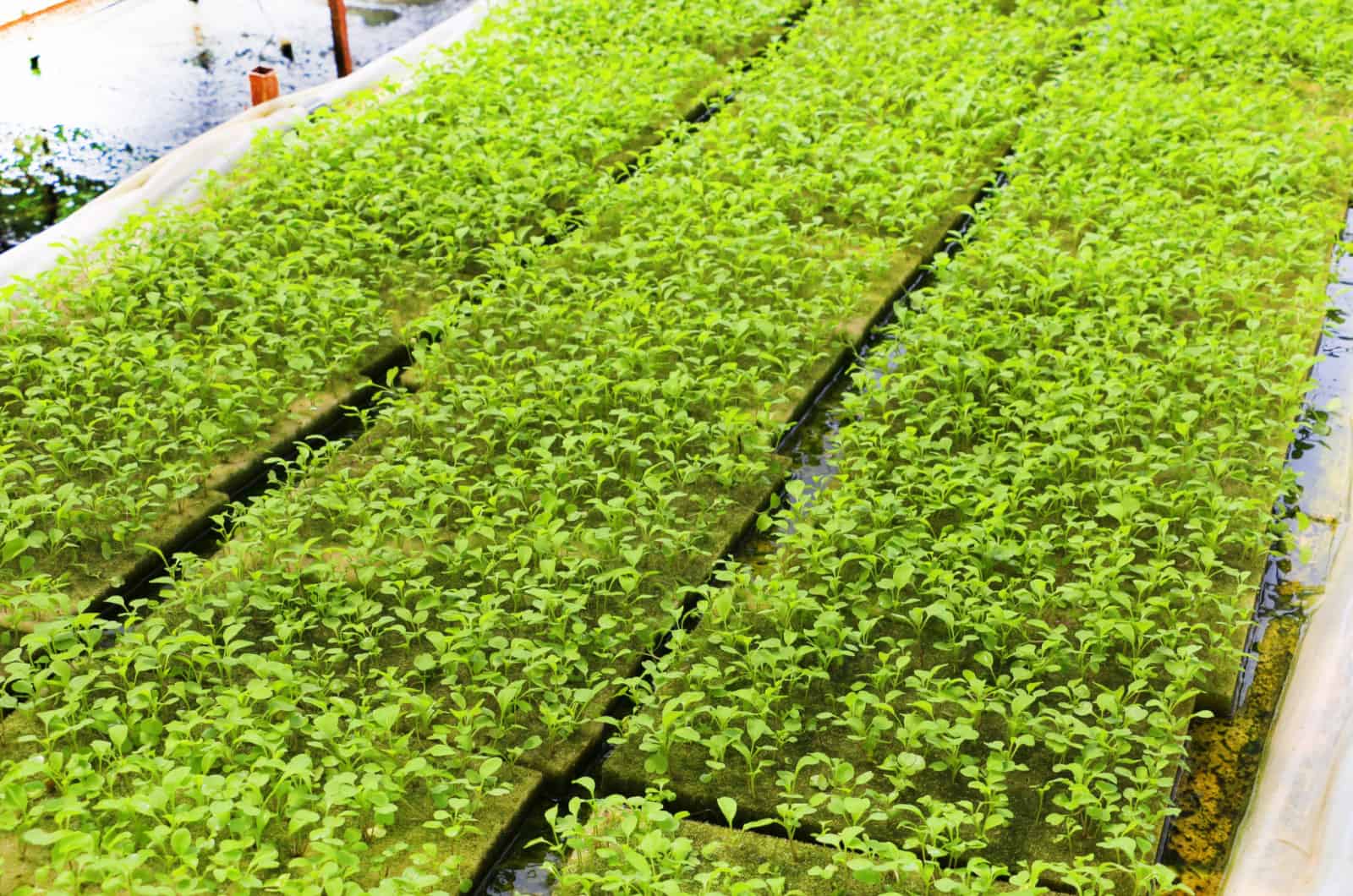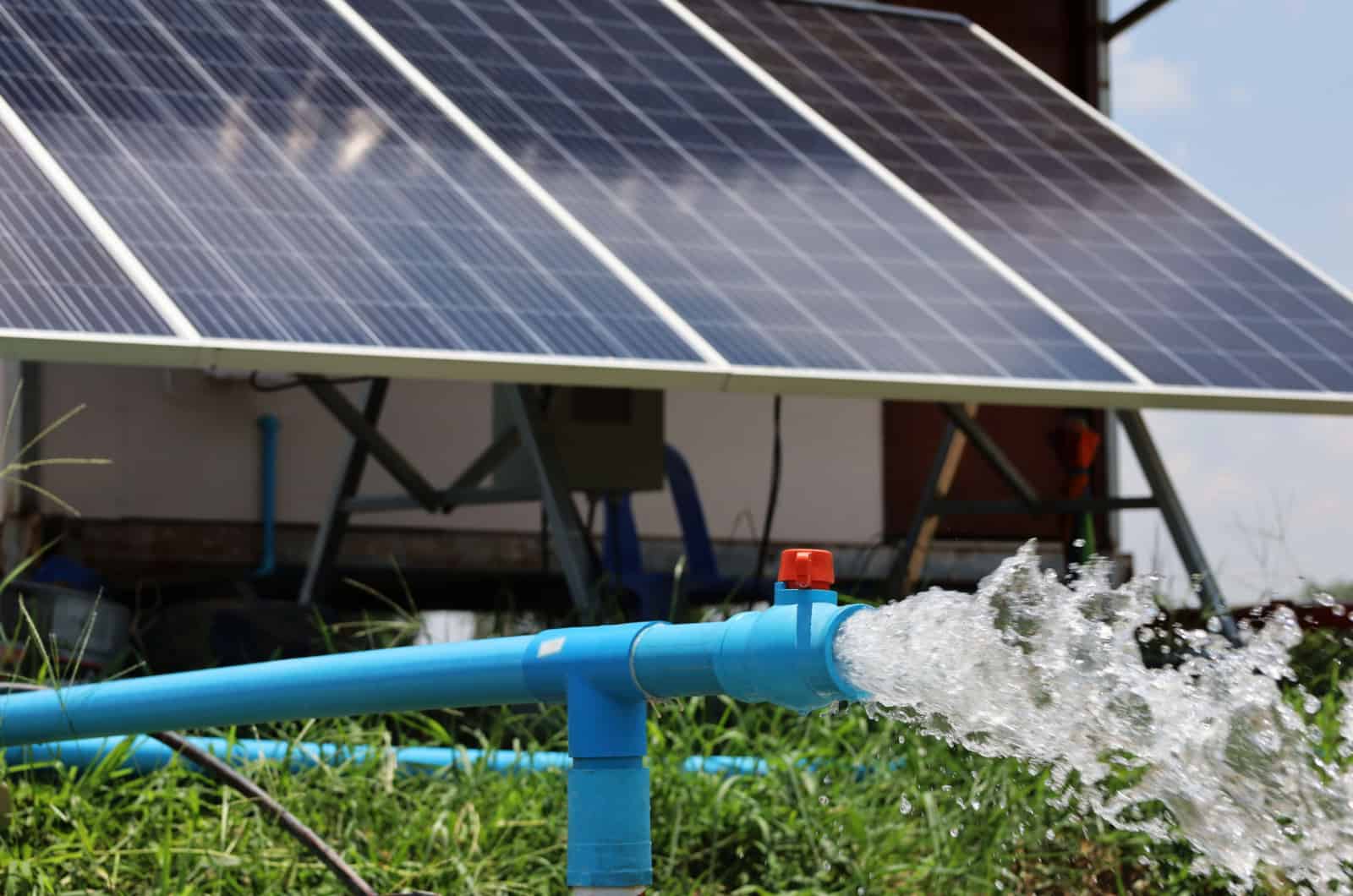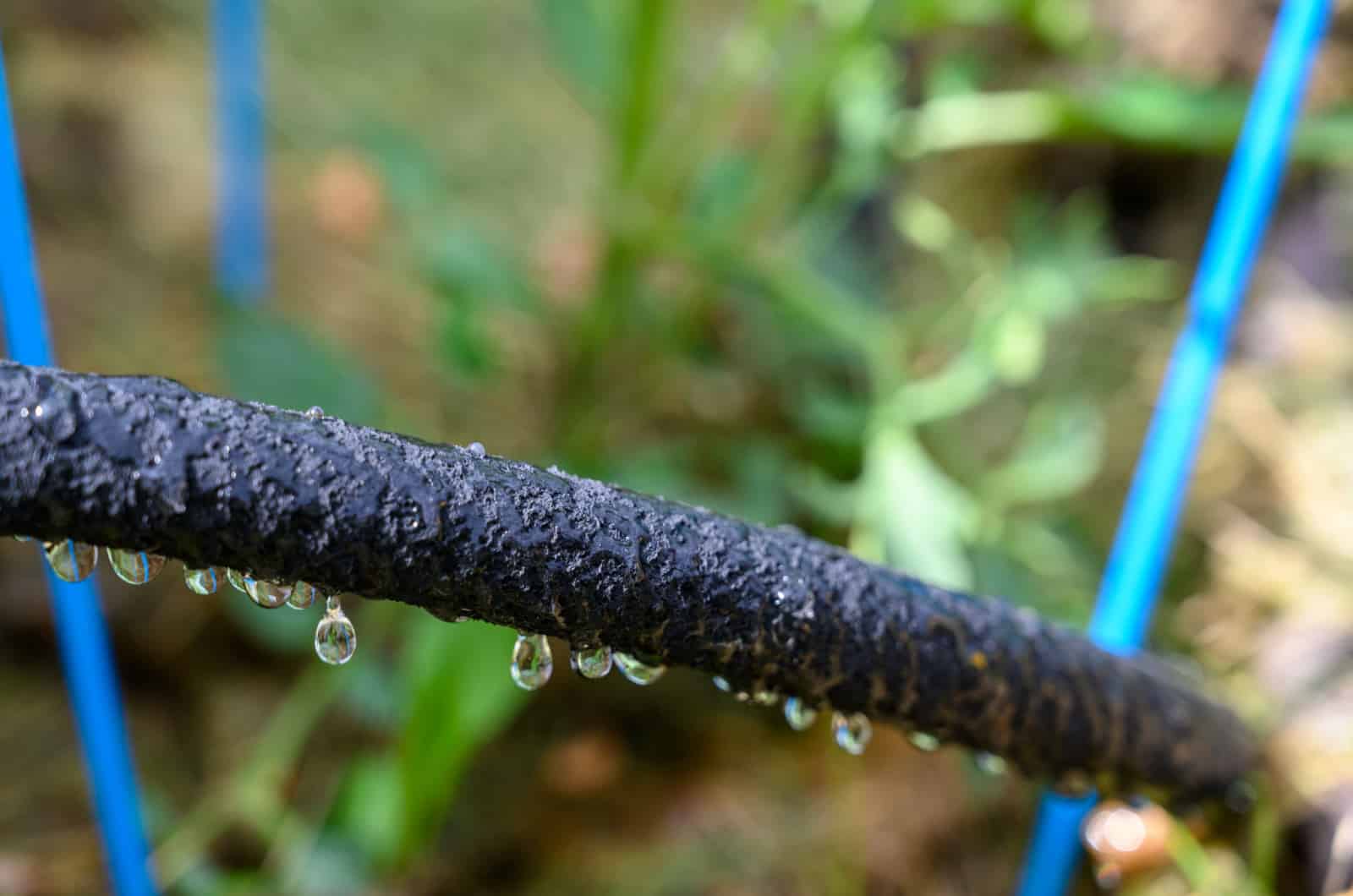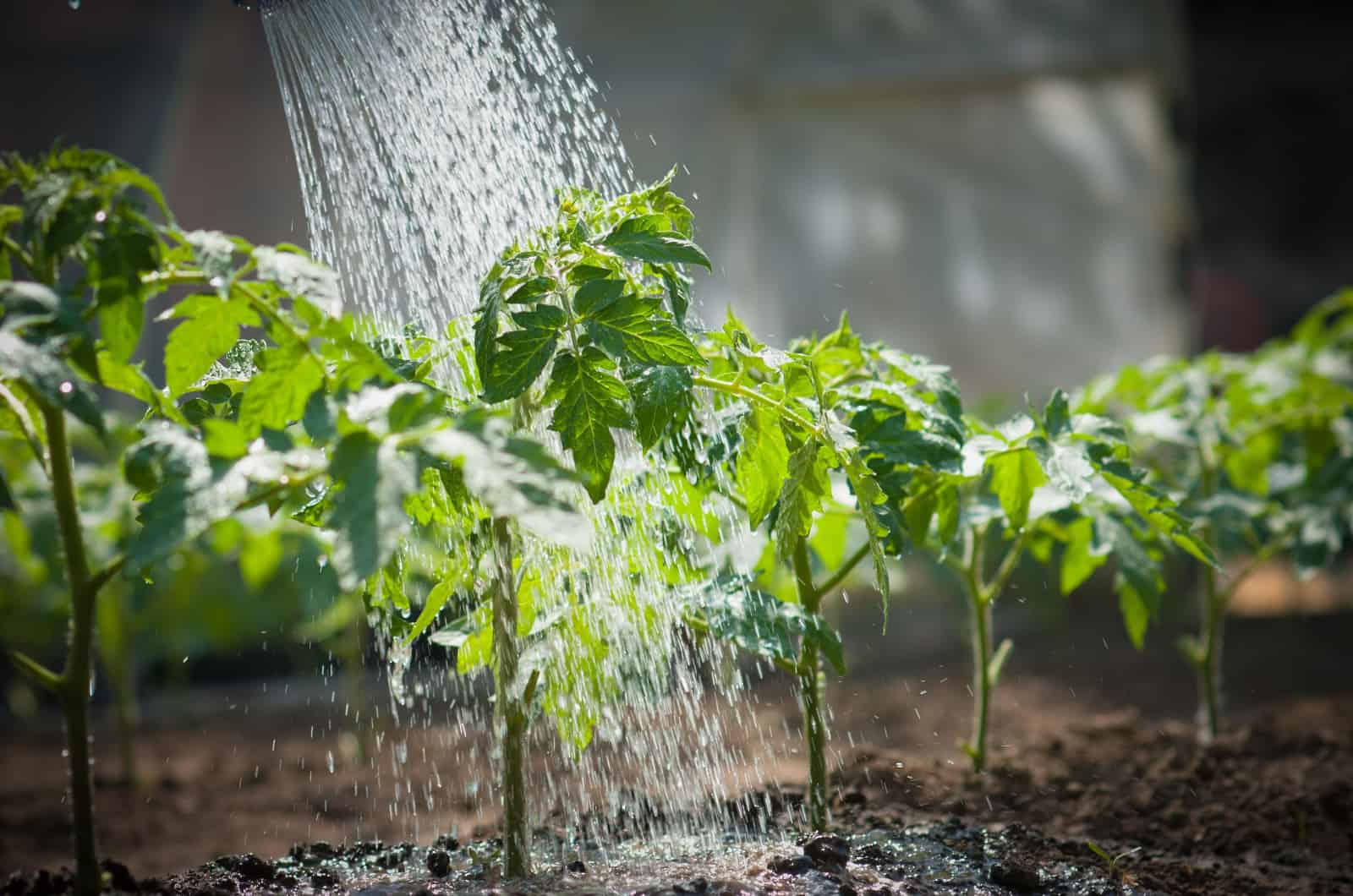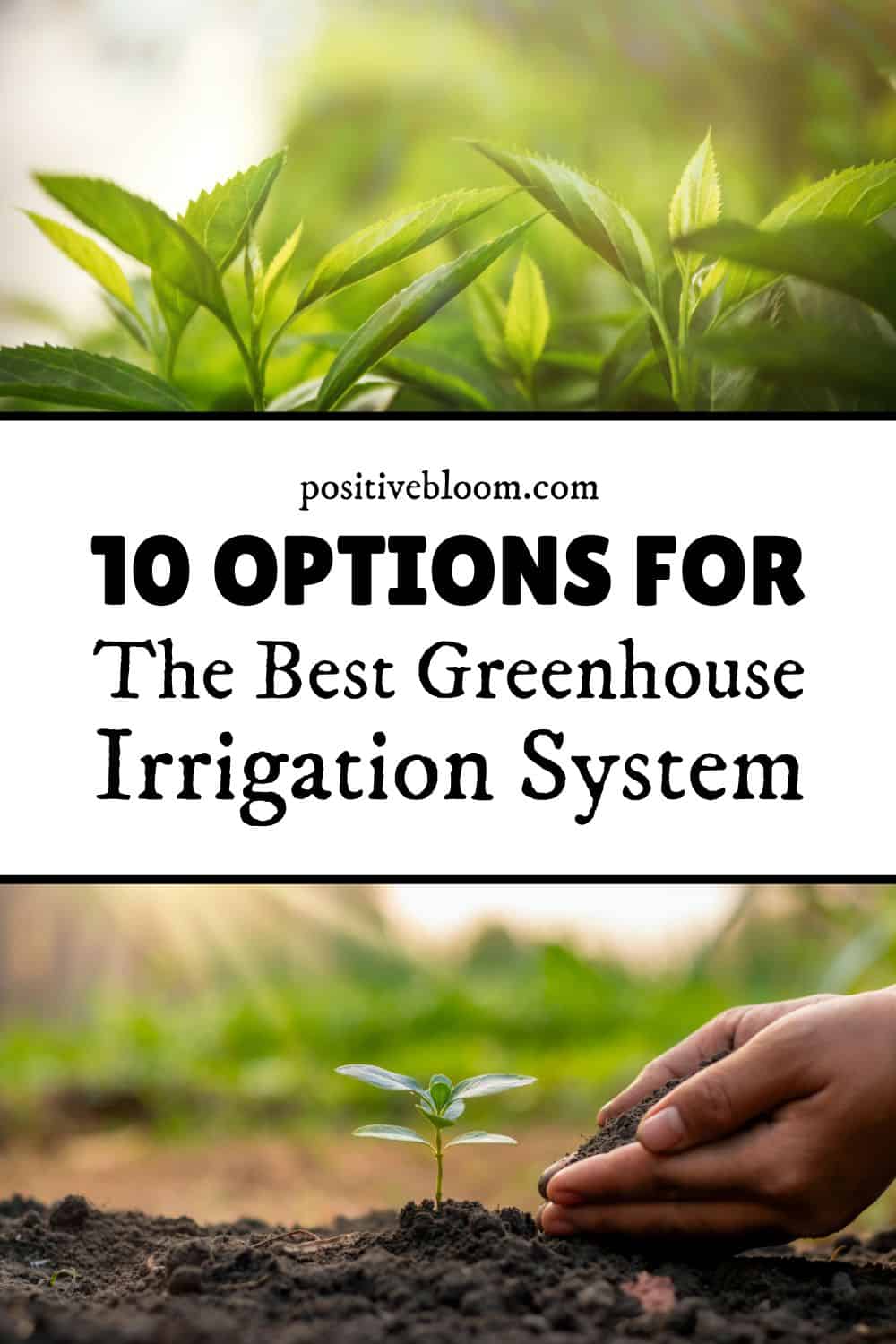Setting up a greenhouse so you can grow your veggies in ideal conditions is an excellent way to improve your overall yield.
However, there is one thing about greenhouses that has inspired many debates online: the watering system.
Of course, you can always irrigate your plants manually, but there are some interesting setups you could try to reduce the amount of work you have to do.
It may be quite challenging to find the best greenhouse irrigation system for your plants’ needs, so we’ll examine the pros and cons of ten different types so that you can choose the perfect one.
Let’s get started!
10 Different Types Of Greenhouse Irrigation Systems
Before setting up any kind of watering system in your greenhouse, choosing the best type of water for your plants is crucial because some varieties may hurt your veggies or flowers.
For instance, distilled and rainwater are the best choices as they don’t contain chlorine, which tap water does. This mineral may build up in your plants and inhibit their ability to absorb much-needed moisture and nutrients.
Of course, tap water is not off-limits, but you will have to prepare it to be completely safe for your greenhouse plants. Fill a container with tap water and leave it to sit in the air for at least 24 hours before using it so that the chlorine can evaporate.
Also, some plants cannot handle hard water, but using water softeners may lead to additional issues. In that case, you might want to stick with distilled water or rainwater as it is cheaper.
Now that you know which kind of water should be used in the irrigation system, let’s discuss the pros and cons of some popular setups!
1. Drip Irrigation System
The drip watering system is probably the most popular one as you can adjust it to fit small containers and use it for large-scale growing.
It is ideal for plants that prefer moist soils because it slowly releases water over time, which prevents dehydration.
In its essence, a drip system is a regular garden hose with numerous emitters or drippers that deliver water to your plants. You can even get one with drip lines to provide moisture directly to the plant’s roots.
The good thing about this watering setup is that you’ll be able to time and regulate the water supply so that your plants get the perfect amount.
You can install this system on the ground or below the soil surface, and if you want to increase its efficiency, place the drippers as close to your plants as possible.
Many growers are attracted to this setup because it doesn’t waste too much water (there’s no spilling over the edges). However, it does require power to pump water, so electricity or solar energy are necessary.
We mentioned a couple of things that can attract (or deter) you from using this setup, but let’s examine its benefits and drawbacks side by side so that you can make an informed decision:
[table id=443 /]
2. Hand Watering
If you have just set up your greenhouse for the summer, you’ll likely need a way to keep your plants moist.
The simplest solution is usually the best, so you can just take a watering can and get on with it yourself!
Hand watering might be time-consuming and backbreaking, but your plants’ roots will be pleased.
It is an excellent choice if you don’t have plenty of plants or if you have many different varieties that require different moisture levels.
But just like with any watering technique, this one also has its benefits and drawbacks, and we’ll look into them in more detail below:
[table id=444 /]
3. Sprinkler System
Overhead watering is an excellent way to save time if your plant can handle wet foliage.
Many of our green friends can get infected with powdery mildew or leaf spot, but if your plant doesn’t mind having damp leaves, this is the perfect option.
For instance, small transplants love overhead watering!
We’ve all heard of lawn sprinklers, but they’re not so common in greenhouses. However, overhead sprinklers are an excellent option, and you can even adjust the nozzle to a specific range based on the interior placement.
The greenhouse sprinkler system is flexible, which means it comes in many different forms, including spray stakes. Netafim brand has many different irrigation systems and supplies, so if you need a sprinkler head riser, hose connectors, or even dripline adapters, they’ve got you covered.
Finally, you should monitor the functionality of each sprinkler as you don’t want your plant growth to be inhibited due to a lack of hydration.
Now, let’s look at the pros and cons of this watering setup:
[table id=445 /]
4. Boom Watering System
Finding the right greenhouse irrigation system can be tricky because you have to consider many things, such as plant preferences, water pressure, type of growing medium, etc.
If you produce certain vegetables on a large scale, you might want to try out water booms. It definitely isn’t everyone’s cup of tea, as it is expensive and requires special greenhouses for installation, but it has a lot to offer.
A boom watering system is basically a set-up of pipes with nozzles that supply plants with water as they move over them. This system is actually mobile and provides excellent coverage.
Growers usually set it up on rails above their plants, but you can also use trolleys that move down the aisles.
It does require electricity or at least batteries to work, so its everyday use may be expensive.
Here are some benefits and drawbacks of this system:
[table id=446 /]
5. Misting System
Misting irrigation systems are perfect for arid climates, humidity-loving plants, or greenhouses where you germinate seeds. Just like small-scale spraying, a misting setup releases a smaller amount of water.
However, one of the benefits of using this system instead of an old-fashioned sprayer is the fact that you can time it and choose whether you want it to run for longer periods or just mist your plants every 15-30 minutes.
The misting system is similar to the sprinkler one, but it uses less water and can be used more frequently, so it provides superior moisturization.
One of the reasons that many growers opt for this type of irrigation is the fact that it can reduce the temperatures within the greenhouse, which is especially useful in hot regions.
Of course, even this system has a good and a bad side, but we’ll bring everything you need to know about them below:
[table id=447 /]
6. Self-Watering Pots And Capillary Mats
One of the easiest irrigation systems suitable for beginners are self-watering containers. However, there are a couple of problems with self-watering planters; they aren’t ideal for all plants, may attract mosquitoes and gnats, and are pricey.
However, if you grow orchids, pothos, or African violets, you’ll be glad to hear that they’ll thrive in these pots, which will significantly reduce the time you spend watering.
Self-watering containers have a water reservoir that supplies your plants with water from the bottom. Some even come with capillary mats that absorb water and slowly moisturize your plants.
All you’ve got to do is place a potted plant on top of it, and the mat will do its magic. Of course, the container has to have drainage holes so the moisture can enter from somewhere.
Self-watering planters and capillary mats promote root growth as the source of moisture is below. They even make a humid environment which helps with plant development and saves water; your plant doesn’t transpire as much, so it requires less moisture.
You just have to replenish the water in the reservoir when it gets critically low, and you’re done!
[table id=448 /]
7. Nutrient Film Technique
The nutrient film technique (or NFT) is a hydroponic setup, so it’s not suitable for every plant, greenhouse, or gardener. On the other hand, fast-growing and lightweight veggies such as lettuce are perfect for this system.
You can grow heavier veggies, such as tomatoes, but you’ll need something to support its weight as the plant grows.
NFT is a hydroponic system where plants grow in extremely shallow water that contains all the minerals that the plants need for proper growth and development.
This is an active system and a bit more challenging to build because it has moving parts (unlike passive hydroponic systems such as the wick system).
In the NFT, the pump moves water and nutrients from the reservoir and brings them up to the tray, where the plants’ roots absorb them.
When growing plants in this system, you don’t have to use any type of substrate because the plant can get moisture, nutrients, and oxygen from the water itself.
[table id=449 /]
8. Subirrigation (Ebb And Flow)
The Ebb and flow subirrigation technique is another system for growing plants in hydroponics. It applies moisture to the bottom of the tank and reduces the loss of water and minerals due to the collection and re-circulation of nutrient solution.
Ebb and flow is similar to the nutrient film technique as they both use pumps to move water, but that’s the only connection between the two.
In this subirrigation system, water floods the tank, overflows the plants’ roots so they can absorb moisture and nutrients, and then drains back to the reservoir.
This system improves plant growth and development, so if you want to grow some hydroponic carrots, try out this technique.
Of course, there are advantages and disadvantages to using ebb and flow, and we’ll discuss them below:
[table id=450 /]
9. Solar-Powered Watering System
If you’re willing to spend extra cash on setting up an energy-saving system, you might want to try out this one!
The solar-powered system is somewhat similar to drip irrigation, but it doesn’t use electricity. You can even use rainwater and save more money on your water bill.
But if it hasn’t rained for a while in your region, you can simply connect it to the hose to keep your plants hydrated.
The good thing about this system is that it is entirely self-sufficient, so there’s no need to panic if there’s a blackout.
All you’ve got to do is connect the solar pump to the container where your store rainwater and the irrigation can begin.
Of course, there are both positive and negative sides to using this system, and we’ll discuss them in the following table:
[table id=451 /]
10. Soaker Hose Technique
The last irrigation system is the soaker hose technique, which may remind you of drip irrigation.
However, this system doesn’t use a regular garden hose. A soaker hose is very porous, and unlike in drip irrigation, it doesn’t contain any holes, drippers, or emitters to bring water to your plants.
Instead, the moisture leaks through it and delivers a small amount of water to your plants at all times.
This is an excellent substitute for drip irrigation as you don’t have to plan where exactly you put the drippers.
Of course, there are always downsides, one of which is that you cannot control the water output. However, you can just stay away from containers and use this system for raised beds, and you won’t have to deal with water-clogging.
There are a couple of other things we want you to know about this technique, so check out the pros and cons section below:
[table id=452 /]
How To Choose A Greenhouse Watering System
There are a couple of different aspects that you should take into account before choosing the irrigation system for your greenhouse.
For instance, there are many different greenhouse vegetable plants you can grow, but not all of them have the same needs. Some plants need more moisture and some less; some can handle wet foliage, others cannot; some need more humidity, some don’t; the list goes on and on.
If you want to set up a germination chamber, try a misting system, but if you wish to grow tomatoes and other similar veggies, you won’t make a mistake with drip irrigation.
As well as the plants’ needs, you should also consider the size of the greenhouse and the number of plants you grow there.
If you want to mass-produce a single crop, you could try out a boom watering system, but if you just want to grow some veggies for personal use, hand watering is the best option.
Of course, some irrigation systems are more pricey than others, so don’t go setting it all up before calculating whether it’ll make it worth your while.
Furthermore, a solar-powered irrigation system, drip irrigation, and hydroponics setups are eco-friendly as there’s no runoff, and the water can be recycled and reused.
We always look for new, time-efficient watering systems, so if that’s your primary goal, automated setups such as a soaker hose, sprinkler system, water boom, or NFT are excellent choices.
Finally, always consider the medium in which you grow your plants. For instance, NFT and subirrigation are suitable for hydroponics, whereas drip irrigation and soaker hoses can be used for soil substrates.
Automated vs Manual Greenhouse Watering System
Automation is essential for some growers, especially if they have large greenhouses that require lots of attention.
However, manual watering isn’t as outdated as you might think, so we’ll discuss the benefits and drawbacks of each of these systems.
Time-Efficiency
Generally speaking, automated irrigation systems are more time-efficient. All you have to do is set them to release water or mist at a certain period throughout the day, and you can forget about moisture chores.
These systems are handy for large-scale greenhouses where every minute counts.
However, if you have a small hothouse and only a few veggies, you don’t have to get expensive equipment that will save you time. You can just take a watering can and get in there; you’ll be done in no time.
If you really want to make your life a lot easier, you can consider getting a soaker hose or a drip irrigation system, as they release water consistently throughout the day.
You will have to close the faucet at some point, but that’s not too much trouble, I hope!
Suitability For A Wide Range Of Plant Life
Automated systems are not advised if you have many different plants in your greenhouse or plants at different growth stages.
You cannot adjust it to fit every individual plant’s needs, so manual irrigation, in this case, is preferred.
It might require more work, but at least you won’t over or underwater your plants.
Price And Water Consumption
Manual irrigation is generally cheaper as you only need a hose or watering can. If you’re willing to collect rain, you won’t have to use tap water, so you can save some money on the water bill.
However, hand watering is more wasteful as the water splashes and cannot be recycled.
On the other hand, automated systems such as boom or hydroponics watering setups may be quite expensive to install. However, they can reuse water if you treat it properly, which is better for the environment and your pocket.
Of course, automated systems require electricity to work, so if you don’t have a solar-powered system, you’ll have to consider the money you spend each month.
Labor Input
The last thing that can help you decide between an automated or manual irrigation system is labor intensity.
Automated setups require little-to-no work on your part, although they might need a competent operator to set it all in motion and monitor the sprayers, sprinklers, emitters, etc.
On the other hand, a manual watering system is labor-intensive, and you will have to put in some good work to get your plants moisturized.
The good news is that you can do it independently; no operator is required!
Wrapping Up
This article brought ten different setups to choose from if you’re in need of a good greenhouse irrigation system.
All of them have their benefits and drawbacks, but that doesn’t mean you should skip them.
They are simply suitable for different things, and it is up to you to decide which one you need. Just think of your plants’ needs, the size of the greenhouse, price and water consumption, the environment, etc.
We included all these things that can help you decide on a certain irrigation system; just study their pros and cons and start planting!
Until next time!
Like this post? Share or pin it for later!

